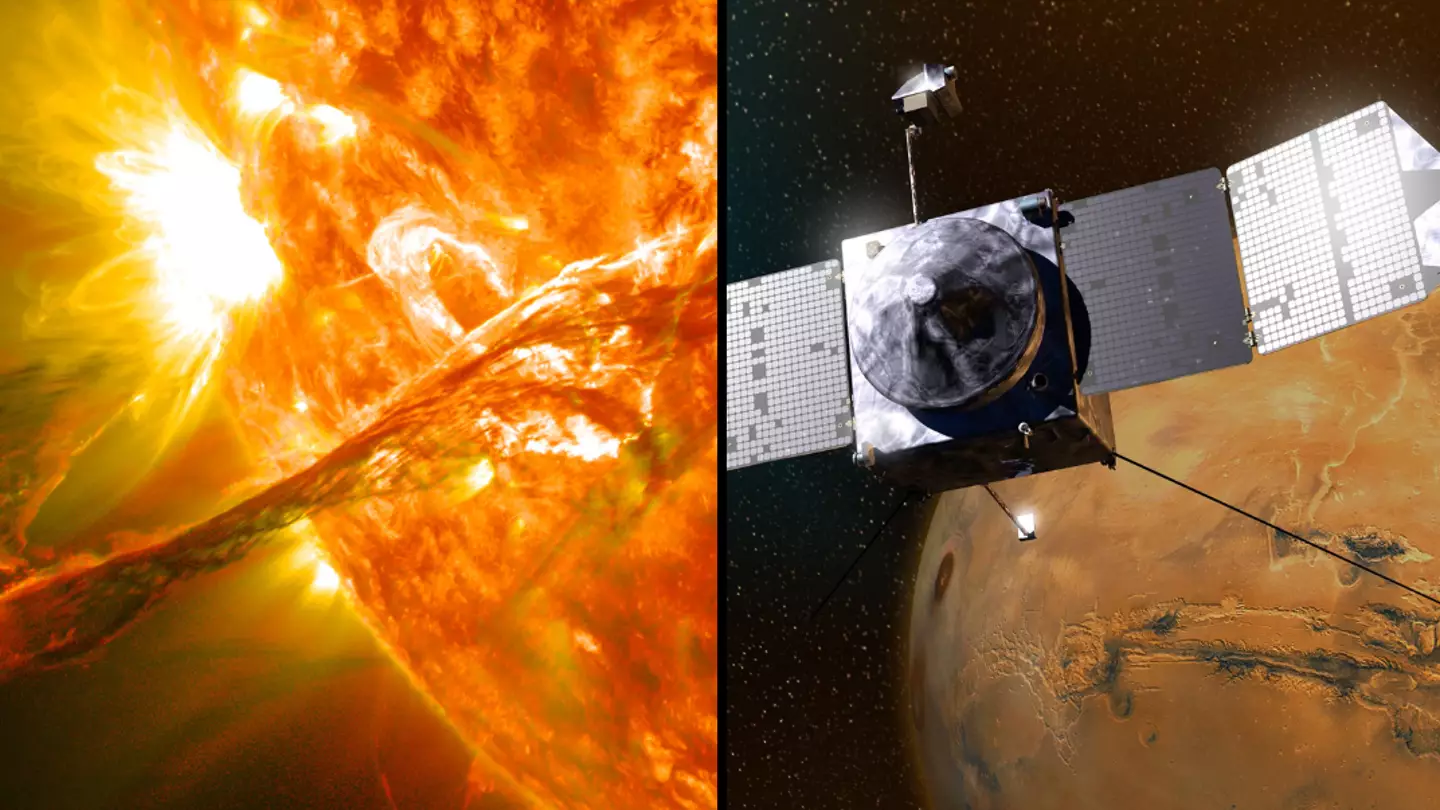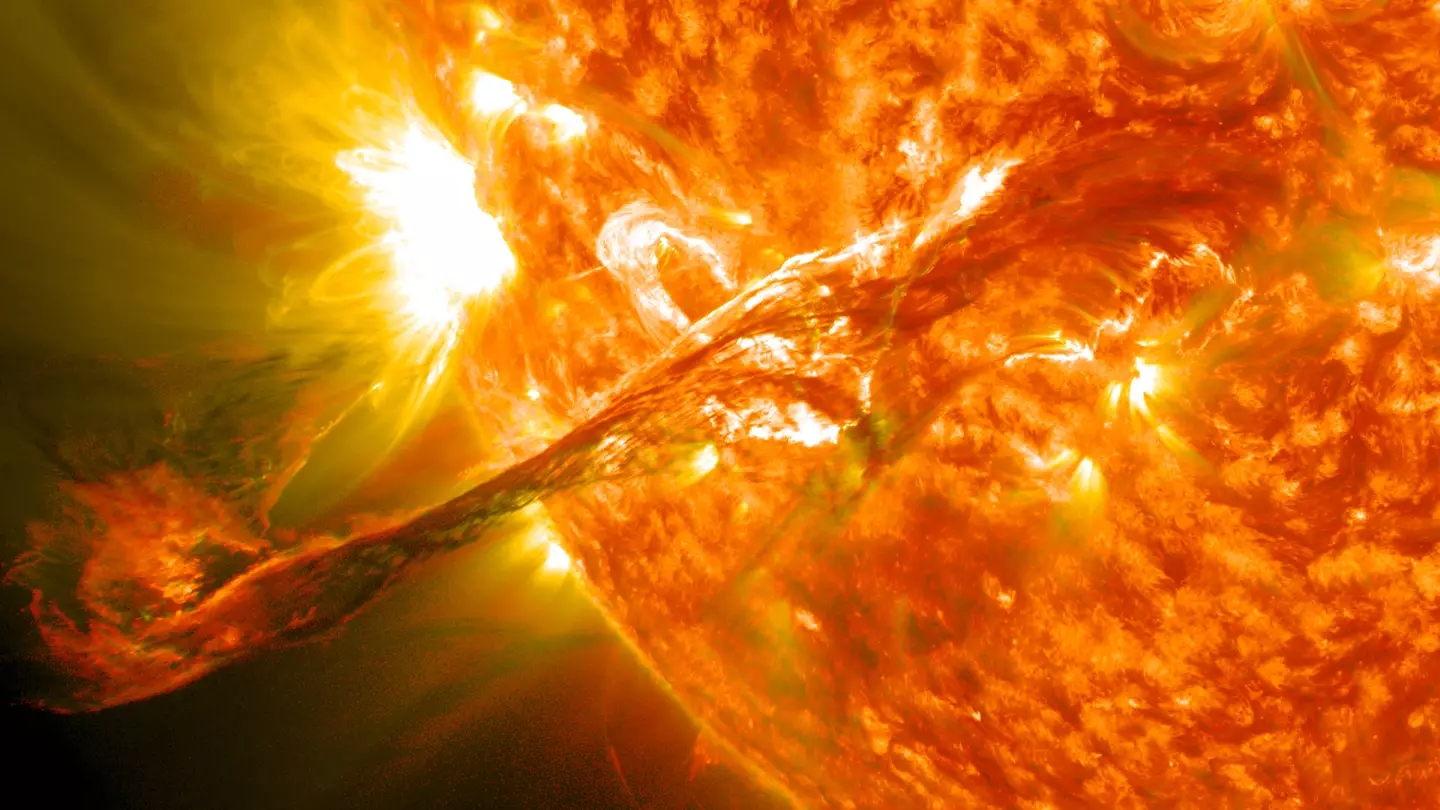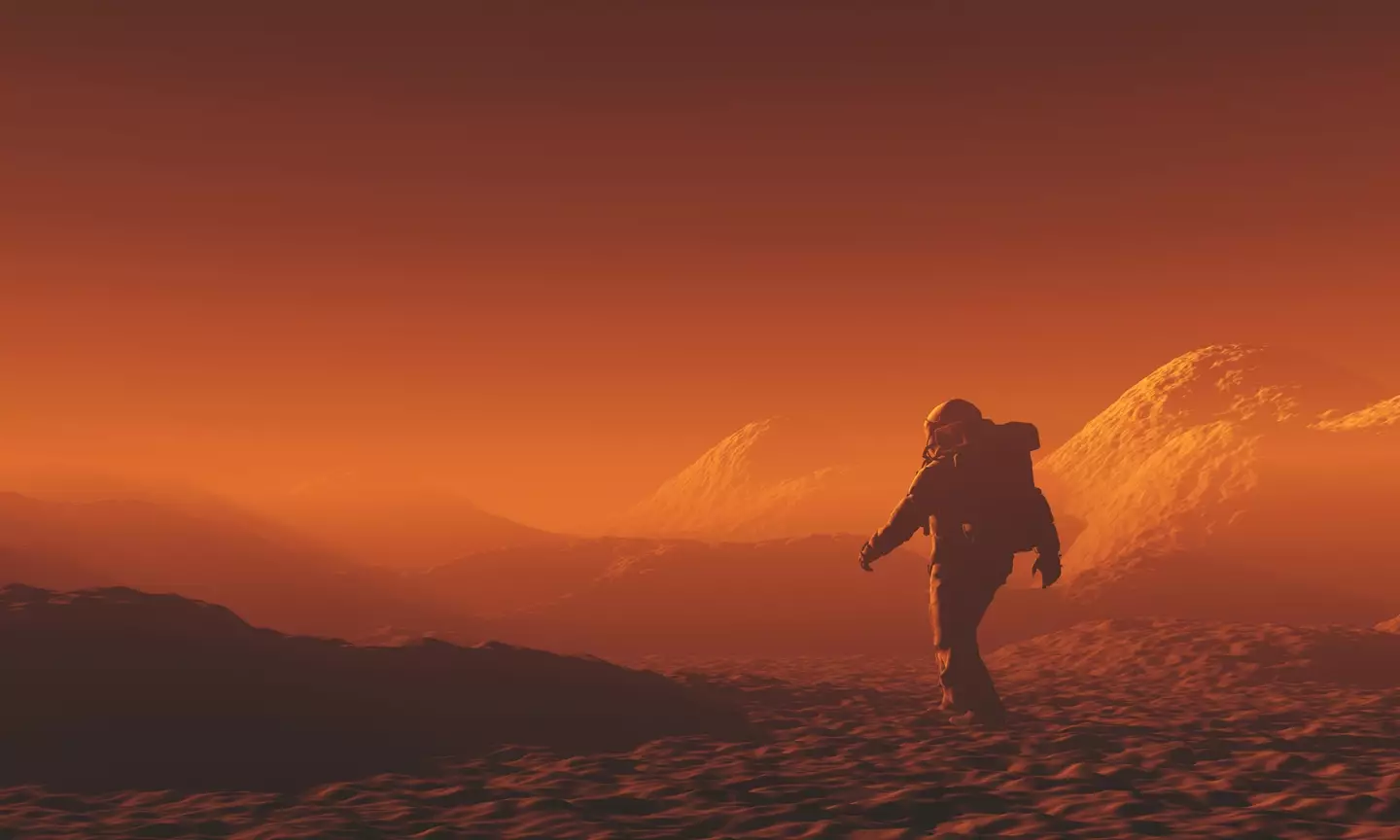
The future of NASA's plan to put astronauts on Mars is set to go under the microscope when a massive explosion on the surface of the Sun rocks the Red Planet.
2024 is a big year for the fiery ball at the centre of our solar system, with the Sun at the peak of its activity. And it's a rare event that scientists can't wait to study with it having the potential to decide many aspects of a first of its kind manned mission to Mars.
American space agency NASA is keen to push forward with Mars expeditions as quickly as possible, especially after finding evidence that alien life might have been erased on the planet.
Advert
But one thing that desperately needs to be studied before it becomes a reality is the huge explosions that take place on the Sun every 11 years or so.
Dubbed the solar maximum, it's when the Sun enters the peak of its activity.
Earth is fine in these scenarios because of the huge magnetic field around the globe (mostly) shielding us from the impact of these solar bombs. But Mars doesn't have the luxury of an electrical charge shielding it, meaning the Sun's actions put it in a much more vulnerable position.

The reality is that these could have huge affects on robots and future astronauts on the Red Planet. Right now, we simply don't know what they could be.
Therefore, NASA's plan is a simple but complex one: study the Sun's volatility in relation to Mars and whether it hurts the chances of future missions to the planet.
Two Mars spacecraft - NASA's MAVEN [Mars Atmosphere and Volatile EvolutioN] and RAD [Radiation Assessment Detector] - will spend time above the Martian surface studying the impact of these solar storms on the magnetic field-less below.

One key aspect being analysed is how much radiation astronauts would take if they were on the planet during these flare ups and whether this could be limited by the use of caves as protection.
Principal investigator for NASA’s MAVEN orbiter is Shannon Curry, of the University of Colorado Boulder’s Laboratory for Atmospheric and Space Physics.
She said: "For humans and assets on the Martian surface, we don’t have a solid handle on what the effect is from radiation during solar activity.
"I’d actually love to see the ‘big one’ at Mars this year - a large event that we can study to understand solar radiation better before astronauts go to Mars."

RAD’s principal investigator, Don Hassler of the Boulder, Colorado, office of the Southwest Research Institute, said: "While MAVEN’s instruments are more sensitive to lower-energy ones, RAD is the only instrument capable of seeing the high-energy ones that make it through the atmosphere to the surface, where astronauts would be."
Another part of the exploration will focus on Mars' history, with it once being a wet Earth-like planet some billions of years ago.
Now it is an ice cold desert and the question as to how it got like this has left astronomers baffled for decades.
While there’s little water left on Mars, with most of it now ice under the surface and at both poles of the planet, some does still circulates as vapour in the atmosphere.
Topics: NASA, Science, Space, Technology, World News